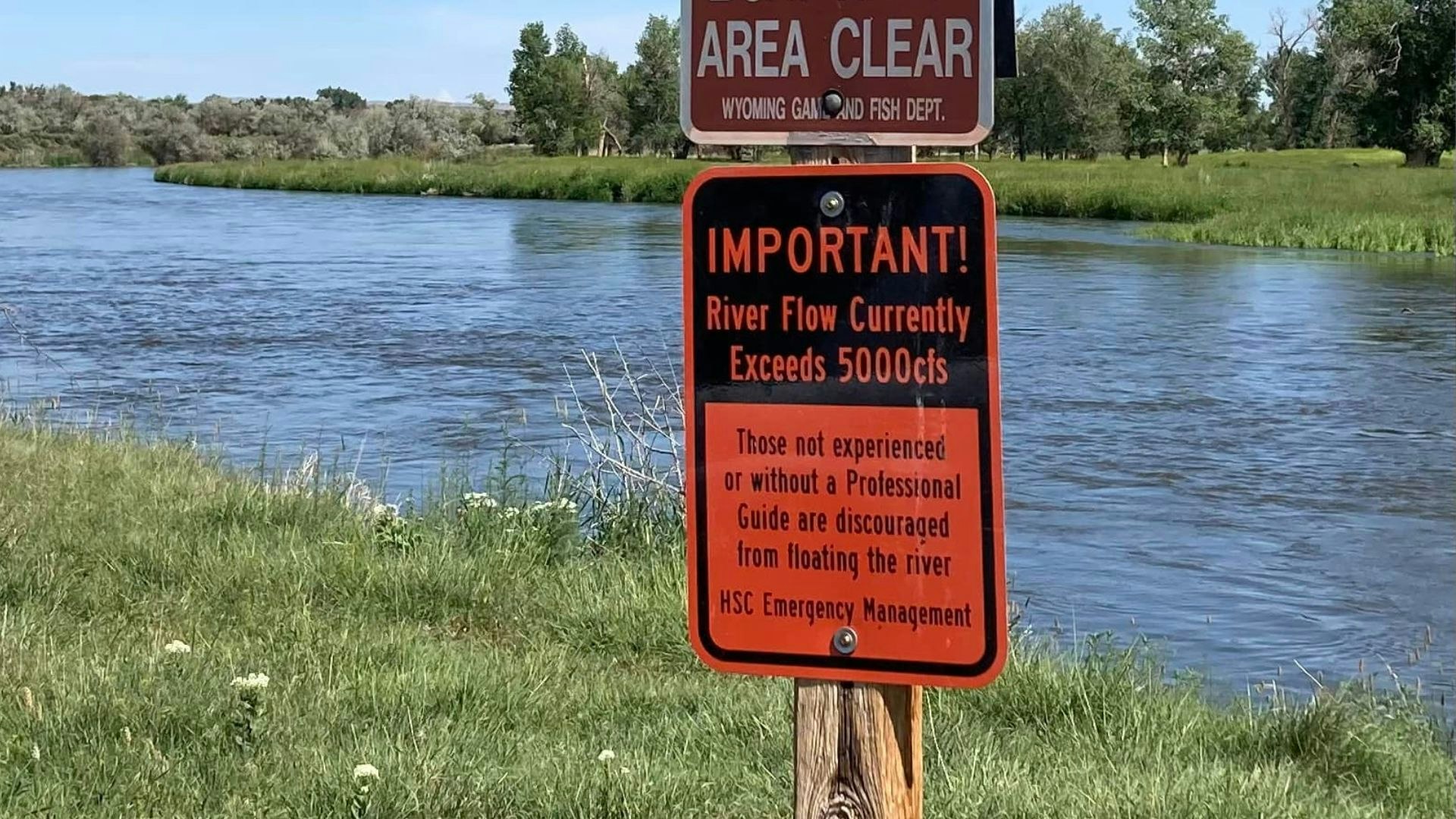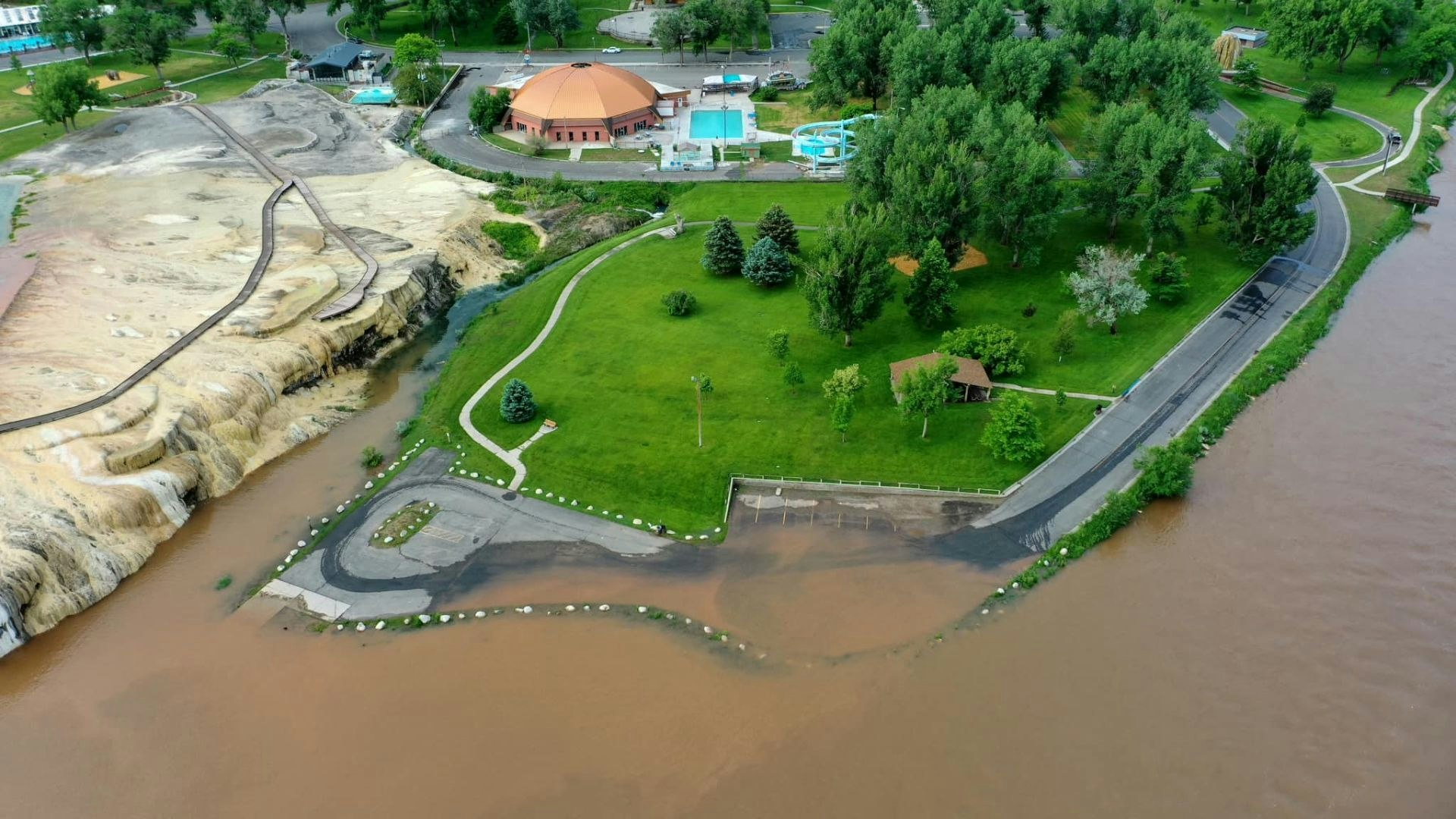The parking lot at the Hot Springs State Park boat launch is under water.
Photos of the boat ramp at the park taken by a drone this past weekend show a partially submerged lot where the Bighorn River has overflowed its banks.
But Hot Springs County Emergency Management Coordinator Bill Gordon said the flooding at the launch is not that big a deal. The real danger isn’t the high water caused by a prolong snowmelt from a huge winter snowpack and a wet spring, but the strong currents hidden under the water’s surface.
“The parking lot is flooded, but it's expected when they have to raise the release from Boysen Dam to 5,500 cfs (cubic feet per second),” Gordon told Cowboy State Daily. “But if somebody takes their kids down to the river and puts them in there with inner tubes at 5,500, it's dangerous.”
No, The County Isn’t Flooding
Gordon said that the flooding of the parking lot at Hot Springs State Park is a regular, but not annual, happening.
“Some seasons they don't have a whole lot of water coming into (Boysen Reservoir), so they don't have to raise the release rates out of the dam,” he said. “So on those years, the water just continues moseying on by and everything is peaceful.”
When the Bureau of Reclamation releases water from Boysen Dam at a rate of 5,500 cfs or more, the boat launch area becomes submerged.
On the other hand, that level of release doesn’t cause issues downriver, Gordon said.
“If the Bureau of Rec took the river up to, I would say even 8,000 cfs, we would still not have any flooding in our county due to that increase, but that parking lot would be completely covered with water,” he said. “As for the rest of our town and county, there's no flooding going on. There's a couple of bars here and there, low spots along the edges of the river that are filling up with water, but there's cattails there anyhow, it's that kind of spot.”

Delicate Balance
In a spring like the one Wyoming is having now, Gordon said the Bureau of Reclamation has had to carefully watch the levels of both the reservoir and river.
“They slowly released water from the lake earlier this spring in order to make a large area to fill when the runoff started, then we had a couple of really big rain events over there in Lander and up on the side of the Wind Rivers, and a lot more water came, and so they decided that they would raise the release,” said Gordon. “It had been 3,000 (cfs), and they decided to take it up to 5,500 in order to compensate a little bit for what's coming in.”
Gordon said the Bureau of Reclamation has to maintain a delicate balance between reservoir levels and outflows from Boysen Dam.
“They have to increase the releases in order to compensate for snowmelt runoff coming into the lake,” said Gordon. “It's a difficult, complex calculation game they have to play – to not let too much out, but not hold too much back; and if they hold too much back in the lake fills too fast ,then they have to increase the levels of release which could cause changes in the river channel and problems down river.”
More Runoff = Swifter Currents
But when the water released from Boysen Dam comes out at a rate of more than 5,500 cfs, Gordon said the danger increases for anyone recreating on Bighorn River.
“When (Bureau of Reclamation) said we're going up to 5,500 (cfs), I just told everybody in Hot Springs County that this is a dangerous, powerful flow,” he said. “If you're not experienced, don't go on the river right now. For all of the fishing guides and whitewater people, they’re fine as long as they know what they’re doing.”
Gordon has a series of metal signs posted along the river that warn people of the dangers of the swift water.
“I have one that applies to a release of 3,000 cfs, I have another one that applies to a level of 5,000, and I have another one that applies to a level of 7,000,” he said. “What's up right now and says the river level exceeds 5,000 cfs, and if you are not experienced or with a professional, you are discouraged from floating the river.”
Looks Can Be Deceiving
Gordon pointed out that from a distance, the Bighorn River doesn’t look dangerous.
“It just looks like this big, beautiful, smooth, flowing river, and you think you can just hop on and have a leisurely ride,” he said. “But it's not leisurely at all once you get out. With that current, you're not coming back to shore unless you know what you're doing, and you're at the mercy of the river.”
Gordon said he’s not so much worried about locals as he is the visitors who flock to Thermopolis and its surrounding areas for outdoor recreation.
“For the family, say, that arrives here from Tennessee and they've got a couple of kayaks tied on the roof of the car, and they load the kids up and they say, ‘Look at this beautiful river. Let's float it,’ and they don't realize that right now it's a really dangerous, threatening sort of river,” said Gordon. “There's brush and Russian olives along the sides, and if you get into that stuff you can drown.”





